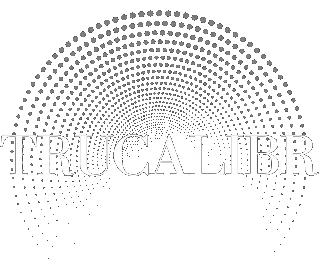Introduction
Setting and achieving goals is a crucial part of personal growth and success. However, many people struggle with effective goal planning and visualization. According to a study by the University of Scranton, only 25% of people stay committed to their New Year’s resolutions after 30 days, and only 8% accomplish them. Proper goal planning and visualization techniques can significantly increase the likelihood of achieving your aspirations.
Table of Contents
- The Power of Visualization in Goal Setting
- Creating a Clear Vision
- Visualization Techniques for Goal Planning
- Staying Motivated with Visualization
- Overcoming Obstacles with Visualization
- Additional Resources and Further Reading
- Practical Tips and Actionable Advice
- Conclusion
The Power of Visualization in Goal Setting
Visualization is a powerful tool that can help you achieve your goals more effectively. By creating a clear mental image of your desired outcome, you engage your brain’s cognitive and emotional processes, making it easier to stay focused and motivated. Research has shown that visualization can increase motivation, improve performance, and boost confidence.
Creating a Clear Vision
The first step in effective goal planning and visualization is to create a clear vision of what you want to achieve. This vision should be specific, measurable, and aligned with your values and priorities. Ask yourself questions like:
- What exactly do I want to accomplish?
- Why is this goal important to me?
- How will achieving this goal improve my life?
- What will success look and feel like?
Answering these questions will help you develop a vivid mental image of your desired outcome, making it easier to visualize and work towards.
Visualization Techniques for Goal Planning
There are several visualization techniques you can use to enhance your goal planning and increase your chances of success:
- Vision Boards: Create a collage of images, words, and symbols that represent your goals and aspirations. Display your vision board in a prominent place to keep your vision top-of-mind.
- Mental Rehearsal: Imagine yourself going through the steps necessary to achieve your goal, as if you were watching a movie in your mind. Visualize the challenges you might face and how you will overcome them.
- Affirmations: Write positive statements about your goals and repeat them to yourself regularly. These affirmations can help reinforce your desired outcome and boost your confidence.
- Guided Visualization: Use audio recordings or apps that guide you through a visualization exercise, allowing you to fully immerse yourself in the experience.
Staying Motivated with Visualization
Visualization can be a powerful tool for maintaining motivation throughout your goal pursuit. By regularly visualizing yourself achieving your goals, you reinforce the positive emotions associated with success. This can help you stay focused and committed, even when faced with setbacks or challenges.
Additionally, visualization can help you identify potential obstacles and develop strategies for overcoming them. By mentally rehearsing how you will handle difficult situations, you increase your confidence and prepare yourself for the challenges ahead.
Overcoming Obstacles with Visualization
Obstacles and setbacks are inevitable when pursuing ambitious goals. However, visualization can help you navigate these challenges more effectively:
- Identify Potential Obstacles: During your visualization sessions, imagine the potential obstacles or roadblocks you might encounter. This will help you anticipate and plan for these challenges.
- Visualize Overcoming Obstacles: Once you have identified potential obstacles, visualize yourself successfully overcoming them. See yourself employing effective strategies and remaining resilient in the face of adversity.
- Reframe Setbacks: When faced with setbacks, use visualization to reframe the situation as a temporary challenge and an opportunity for growth. Visualize yourself bouncing back stronger and more determined.
- Celebrate Small Wins: Visualize yourself celebrating small milestones and victories along the way. This can help you stay motivated and focused on the progress you’re making.
Additional Resources and Further Reading
If you want to learn more about goal planning and visualization, here are some additional resources:
- Books:
- “Visualization for Peak Performance” by Shane Murphy
- “The Power of Visualization” by Lee Hausner
- “The Miracle of Mind Power” by Dan Coughlin
- Articles:
- The Science of Visualization
- How Visualization Techniques Can Boost Your Success
- Websites:
- MindTools: Visualization Techniques
- Visualization Society
- Tools and Apps:
- Calm (Meditation and Visualization App)
- Vision Board Deluxe (Vision Board Software)
Practical Tips and Actionable Advice
Here are some practical tips and actionable advice for enhancing your goal planning and visualization:
- Set Specific and Measurable Goals: Vague or ambiguous goals are difficult to visualize and achieve. Set clear, specific, and measurable goals to create a clear mental image of what you want to accomplish.
- Make Time for Visualization: Set aside dedicated time each day for visualization exercises. Consistency is key to reaping the benefits of visualization.
- Use Multisensory Visualization: Engage as many senses as possible during your visualization sessions. Imagine the sights, sounds, smells, and even tastes associated with achieving your goals for a more immersive experience.
- Combine Visualization with Action: Visualization alone is not enough. Combine it with concrete actions and steps towards your goals for maximum effectiveness.
- Stay Flexible: While visualization can help you stay focused and motivated, be prepared to adapt and adjust your approach as needed. Goals and circumstances may change, and flexibility is crucial.
- Seek Support: Share your goals and visualization practices with supportive friends, family members, or a coach. Their encouragement and accountability can boost your motivation and commitment.
Conclusion
Effective goal planning and visualization can be powerful tools for achieving personal and professional success. By creating a clear vision, using various visualization techniques, and staying motivated and resilient, you can increase your chances of turning your aspirations into reality.
Remember, visualization is not a substitute for action but rather a complement to it. Combine your visualization practices with concrete steps and perseverance, and you’ll be well on your way to reaching your goals.
So, what are you waiting for? Start visualizing your dreams today and watch them manifest in your life!






